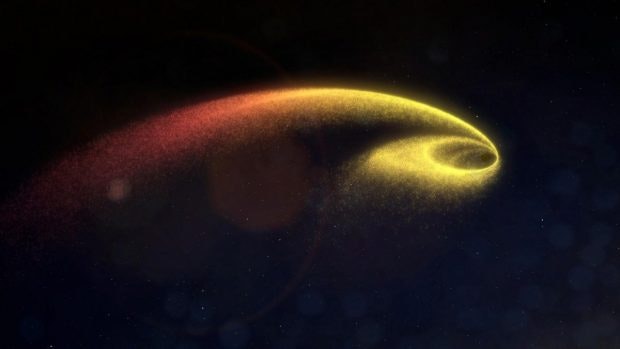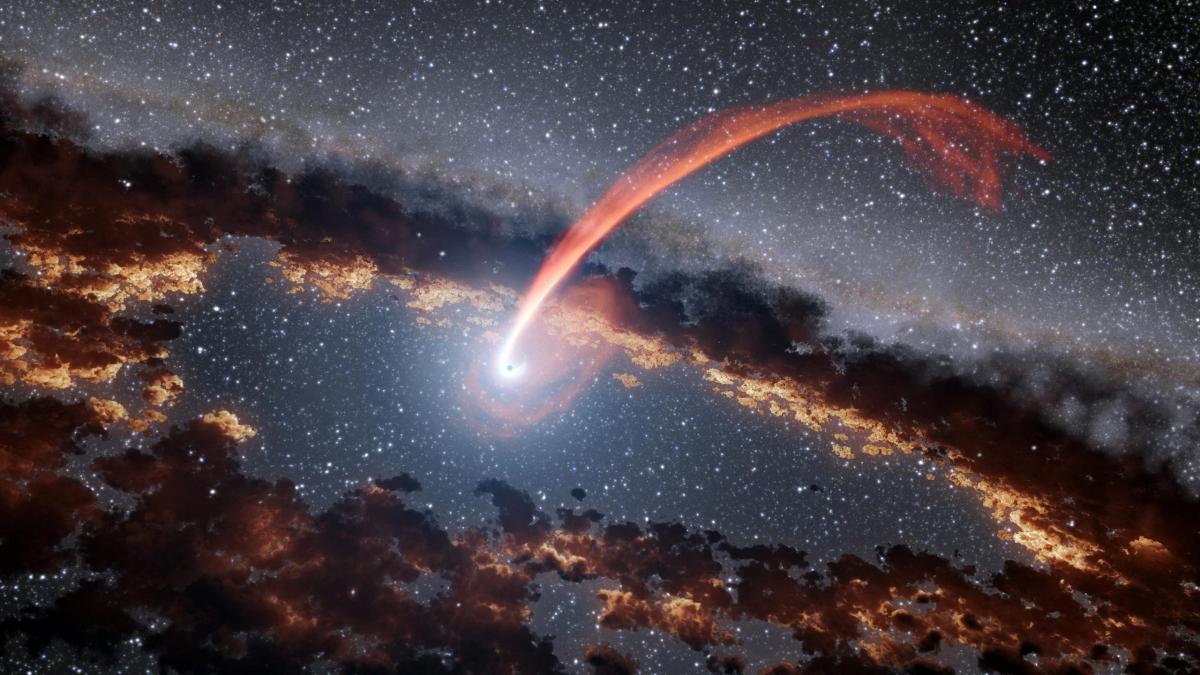That’s what happens when a black hole snacks a star
Radar telescopes have photographed a bad luck star that a black hole has eaten. The results suggest that dark matter theories are incorrect.
Black holes spill when they have absorbed something. In doing so, they leave behind all sorts of evidence that a meal has taken place. Astronomers call the greatest legacy “tidal disturbance”. It is an explosion, similar to a supernova, but it occurs for a different reason. When a star gets too close to a black hole, the tidal forces create massive streams of gas that literally tear the star apart. This in turn results in an immense emission of light that can outshine the light of all the suns in the host galaxy of the black hole for months, even years. Up until now it has always been difficult to ascribe individual streams of light from tidal disturbances to specific black holes. This has now been achieved by an international team of astronomers, which was able to calculate the mass and rotation of the black hole. Her Study is in the Astrophysical Journal.
When a black hole devours a star, it creates a powerful beam of light that provides clues as to the characteristics of the black hole. (Graphic: Nasa / JPL Caltech)
Scientists have observed a tidal disturbance they refer to as J2150. These disruptions are fairly common in supermassive black holes. Nicholas Stone from the University of Jerulasaem said Sci-Tech-Daily: “These monsters are between a million and ten billion times the size of our sun and become strong sources of electromagnetic radiation if too much interstellar gas comes into their vicinity.” So-called medium black holes are more difficult to find. Since they are “only” between 10,000 and 1,000,000 times the size of our sun, their processes often remain in the dark. Co-author Peter Jonker from Radbound University in the Netherlands says: “Because of the limited observation possibilities, it is a challenge to find central black holes that are much smaller than a million solar masses.”

When the black hole rips apart a star, it creates a wave of light that can outshine the entire galaxy. (Image: NASA’s Goddard Space Flight Center / Chris Smith (USRA / GESTAR))
The astrophysicists are all the more proud that they have now been able to observe a medium-sized specimen devouring a star. Ann Zabludoff, professor of astronomy at the University of Arizona, explains the second reason for joy: “By analyzing the flare, we were able to better understand this elusive category of black holes that may be most of the black holes in the centers of the galaxies. ”The measured X-ray emissions provide information about the size of the black hole of J2150, which is a real lightweight with around 10,000 times the mass of the sun. It also has an interesting spin.
“This black hole has a fast spin, but not the fastest possible,” explains Zabludoff. That begs the question of how the black hole can spin in this area. The astrophysicist offers two explanations: “It is possible that the black hole formed this way and has hardly changed since then, or that two black holes of medium mass recently merged together to form this hole.”
The measurements of the rotational speed also help to understand the nature of dark matter. Science assumes that it makes up most of the matter in the universe. Nicholaus Stone explains that dark matter could consist of hypothetical elementary particles called ultra-light bosons. “If these particles existed and had masses in a certain range, they would prevent a medium-mass black hole from having a fast spin,” he said. Stone continues: “But J2150’s black hole is spinning fast. So our spin measurement excludes a broad class of theories about ultralight bosons and shows how valuable black holes are as extraterrestrial laboratories for particle physics. “



